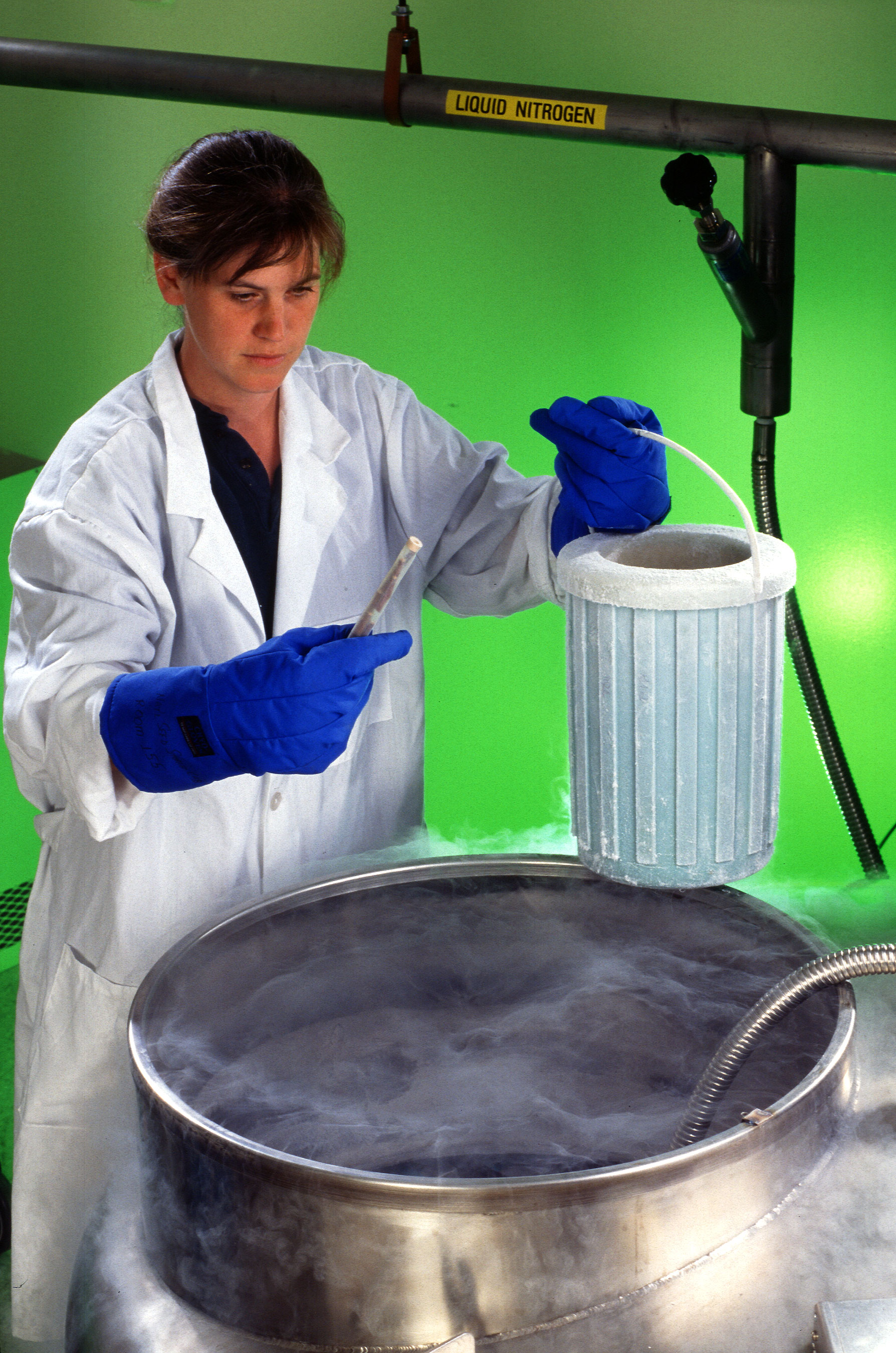| Page 2 |

|
|
1 - Liquid Nitrogen Safety
2 - Page 2 3 - Page 3 4 - Page 4 |

Precaution
The liquid-to-gas conversion rate is about 2.3% per day under ideal conditions. If the liquid is not used regularly, the vessel will be empty in a certain amount of time. So contrary to popular belief, storage of liquid containers in cold rooms will not slow down the liquid to gas conversion.
- Treat liquid nitrogen and any object cooled with liquid nitrogen with respect.
- Do not allow liquid nitrogen to be trapped in clothing near the skin.
- Wear safety glasses or a face shield when transferring liquid nitrogen.
- Wear gloves when touching any object cooled by liquid nitrogen. Gloves should be loose fitting, so they could be thrown off if liquid were to pour inside them
- Use only approved unsealed containers. Never pour it into a coffee thermos. Never seal it in any container (it will explode - remember the balloon).
- Never dip a hollow tube into liquid nitrogen; it may spurt liquid.
- Never use in a small poorly ventilated room, and never dispose of liquid nitrogen by pouring it on the floor. It could displace enough oxygen to cause suffocation.
- Do not store liquid nitrogen for long periods in an uncovered container. Because the boiling point of oxygen, 90.1K, is above that of nitrogen, oxygen can condense from the air into the liquid nitrogen. If the air over the nitrogen circulates, this liquid oxygen can build up to levels which may cause violent reactions with organic materials; even materials which are ordinarily nonflammable. For example, a severe clothing fire could result from ignition in the presence of liquid oxygen.
Personal Protective Equipment (PPE)
 |
One must be thoroughly familiar with the properties and safety considerations before handling a cryogenic liquid and its associated equipment.
The eyes are the most sensitive body part to the extreme cold of the liquid and vapors of cryogenic liquids. The recommended personal protective equipment for handling cryogens includes:
- A full face shield over safety glasses
- Loose-fitting thermal insulated or leather gloves
- Long sleeve shirts, and trousers without cuffs.
- Do NOT tuck pants into shoes or boots
In addition, safety shoes are recommended for people involved in the handling of containers.
In emergency situations, self-contained breathing apparatus (SCBA) may be required.
A special note on insulated gloves: Gloves should be loose-fitting so they are able to be quickly removed if cryogenic liquid is spilled on them. Insulated gloves are not made to permit the hands to be put into a cryogenic liquid. They will only provide short-term protection from accidental contact with the liquid.
Containers
Cryogenic liquid cylinders are insulated, vacuum-jacketed pressure vessels. They come equipped with safety relief valves and rupture discs to protect the cylinders from pressure build-up. These containers operate at pressures up to 350 psig and have capacities between 80 and 450 liters of liquid. Product may be withdrawn as a gas by passing liquid through an internal vaporizer or as a liquid under its own vapor pressure.
There are 2 types of Cryogenic Liquid Containers:
- Low Pressure for dispersing of liquidonly.
- High Pressure for dispersing of liquid and gas.
 |
Pressure relief devices are prescribed based on the following formula for vacuum-insulated cylinders.
- (Cylinder service pressure X 1.25) - 15psi = Maximum Pressure Relief Device Rating.
-Example (200x1.25) - 15psi = 235psi
Hearing a slight hiss from a liquid cylinder is usually the normal operation of its pressure relief device. Never adjust, block, plug or attempt to repair anything on a liquid cylinder.
- Never plug, restrict, or remove any relief device. n
- Never attempt to cap or seal a venting relief device in any way. n
- Ice or frost buildup on a pressure relief valve can be removed with a damp cloth. (Wear proper Personal Protective Equipment (PPE) when removing the frost.)
| << Previous 1 [2] 3 4 Next >> |

